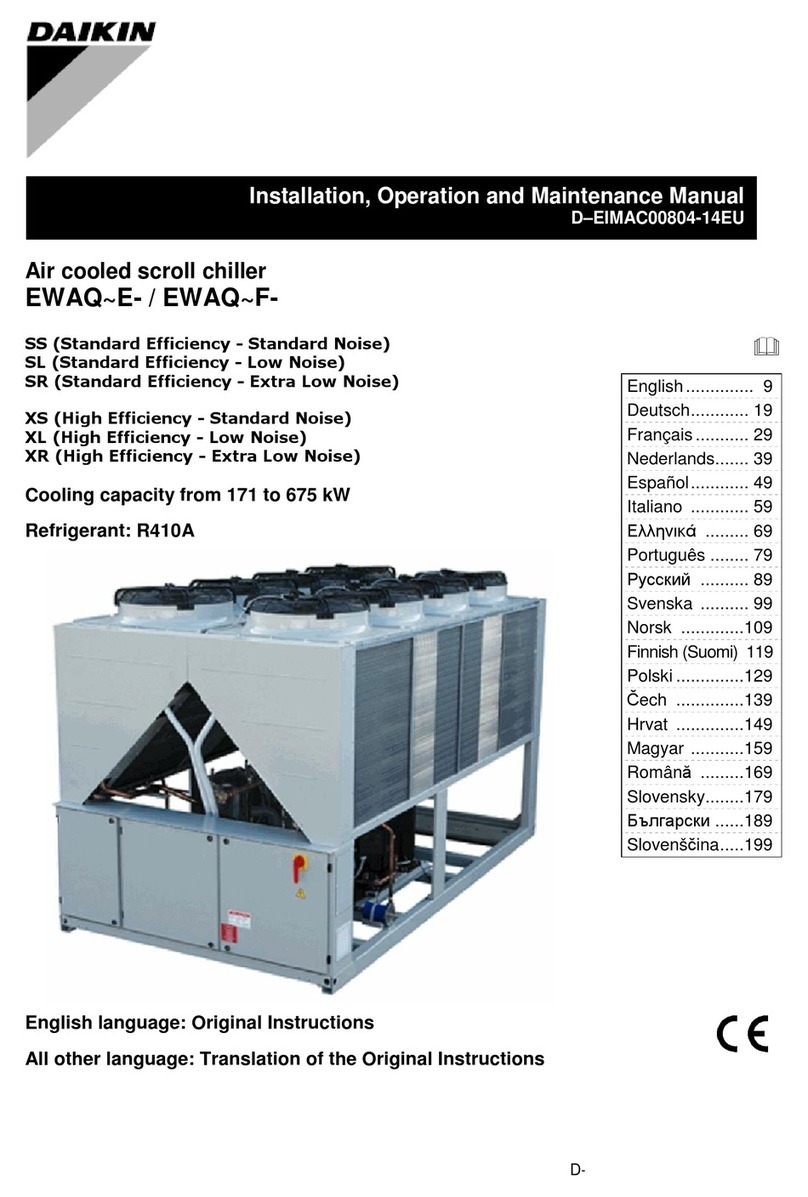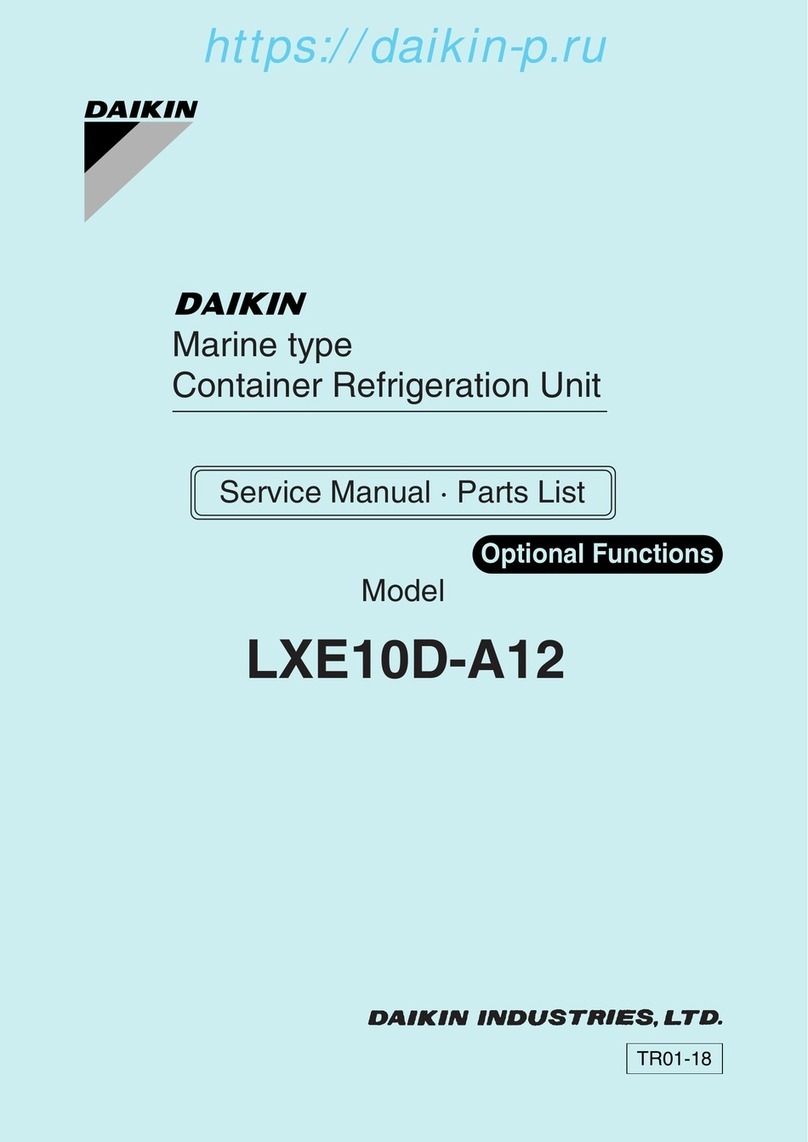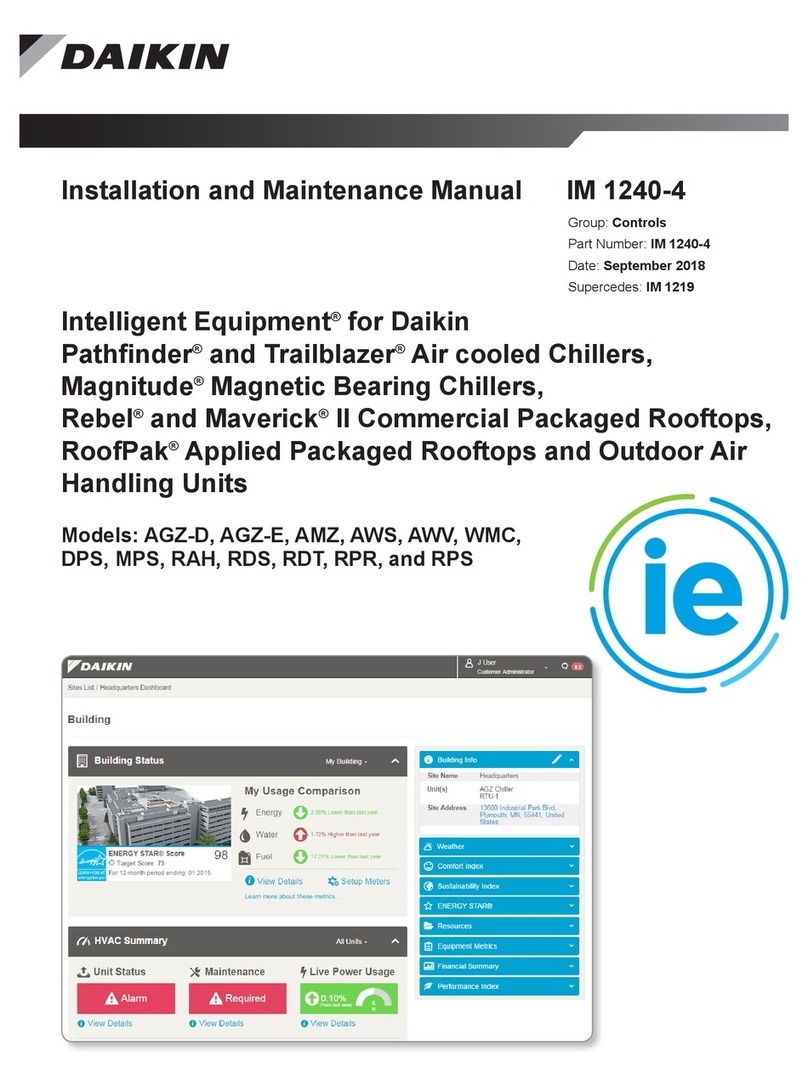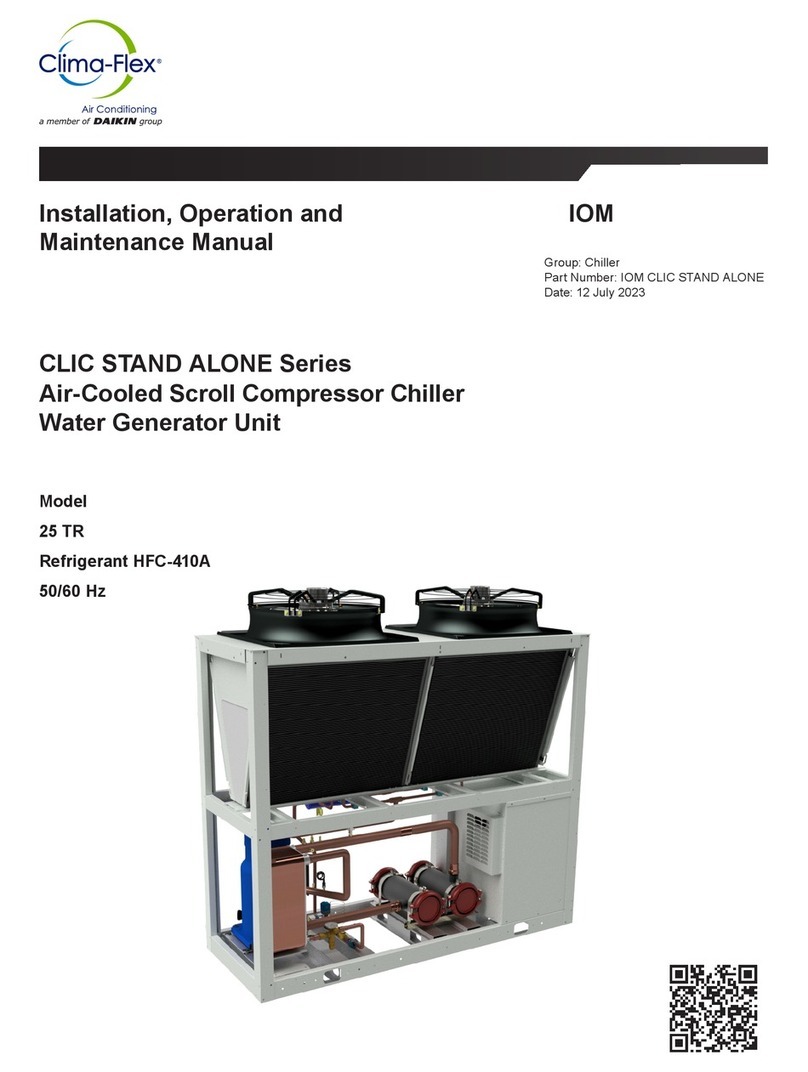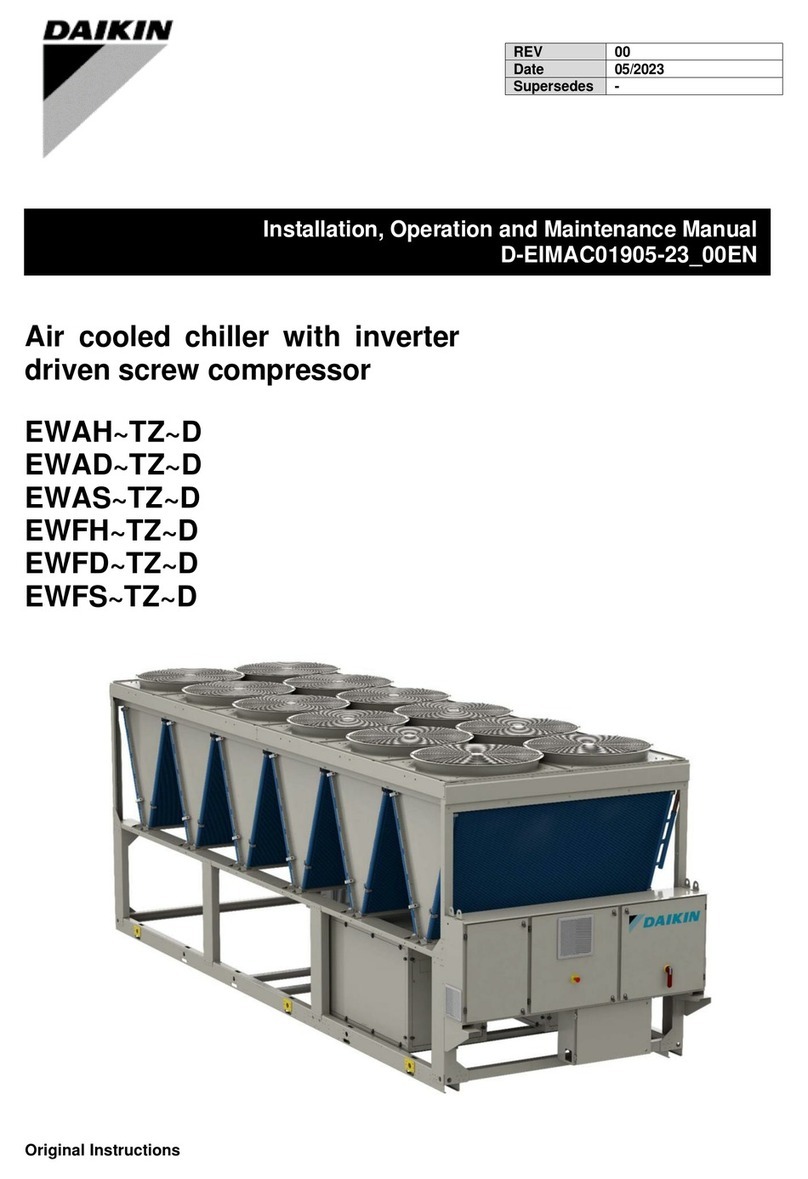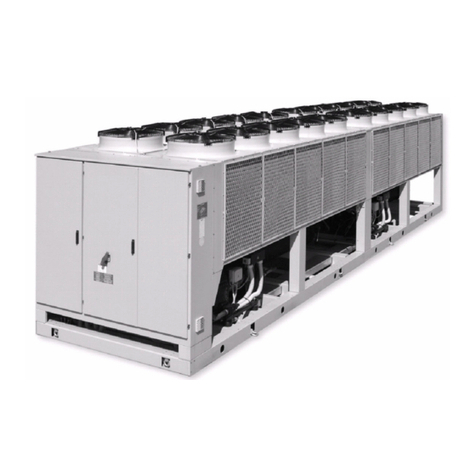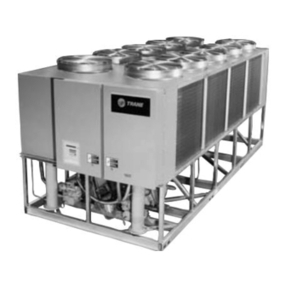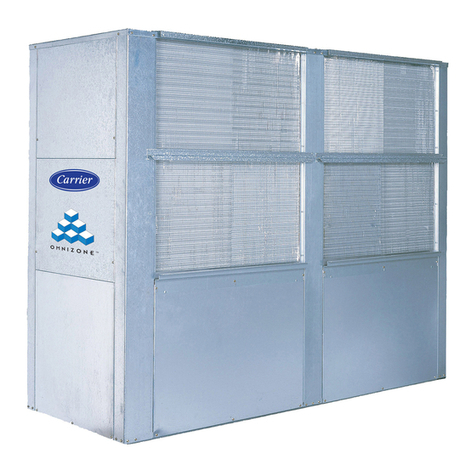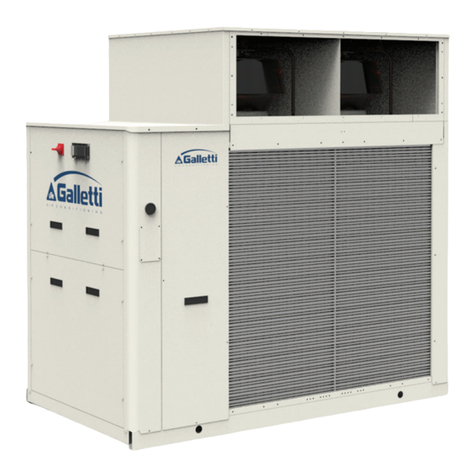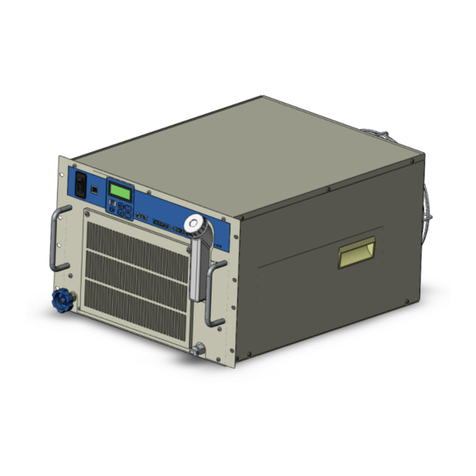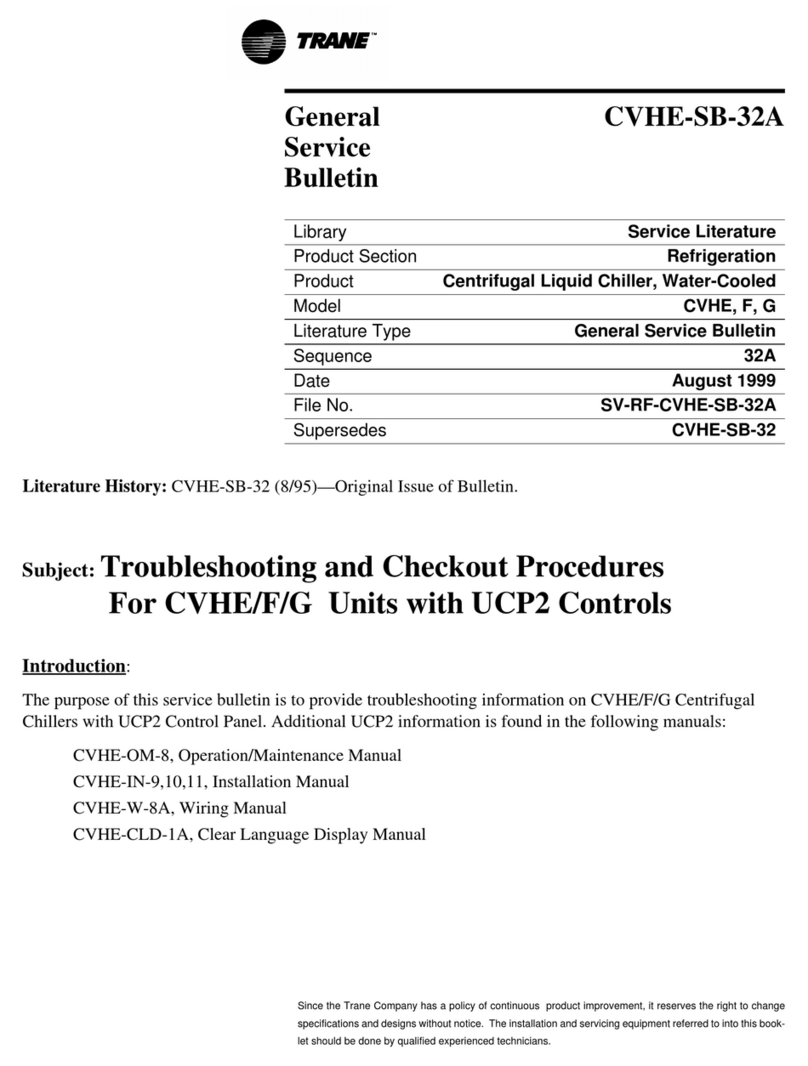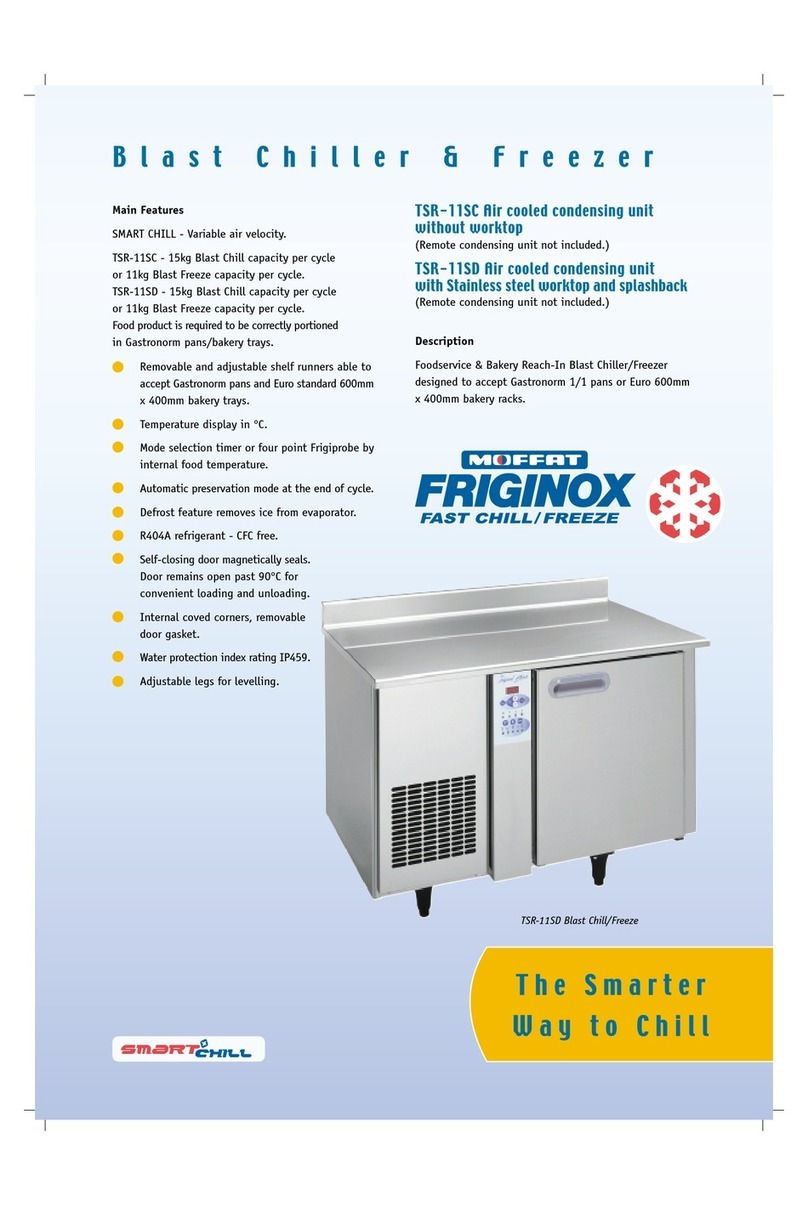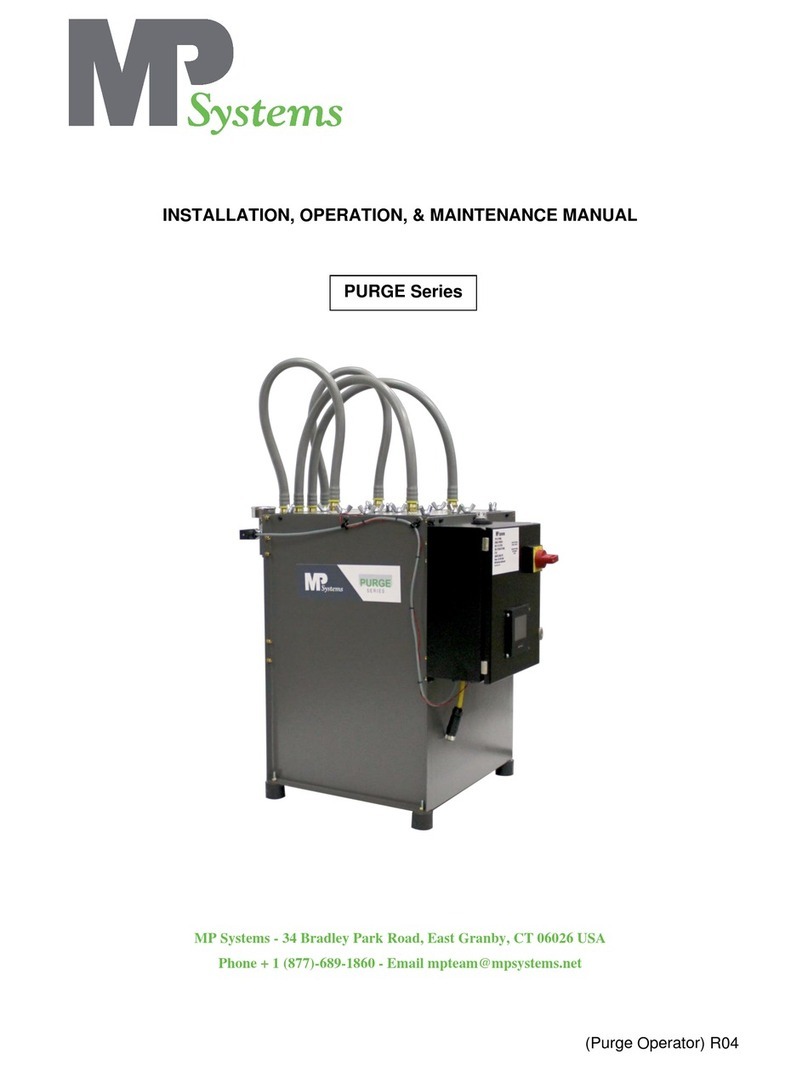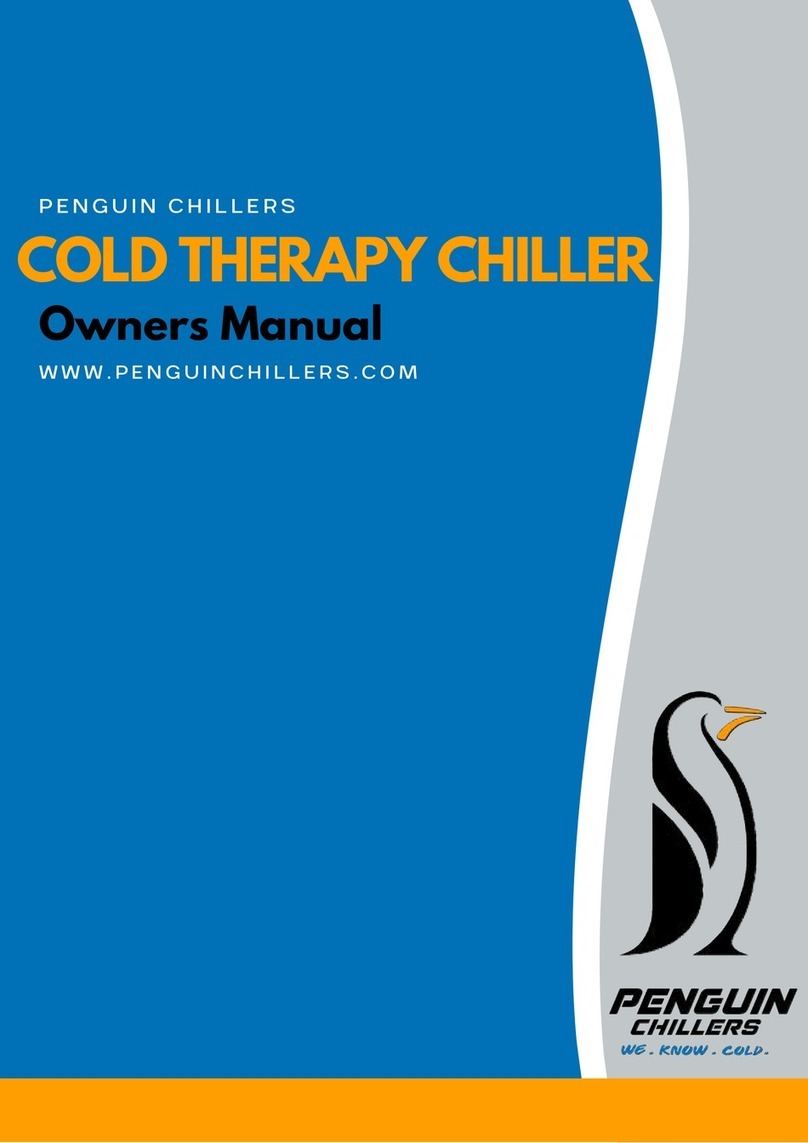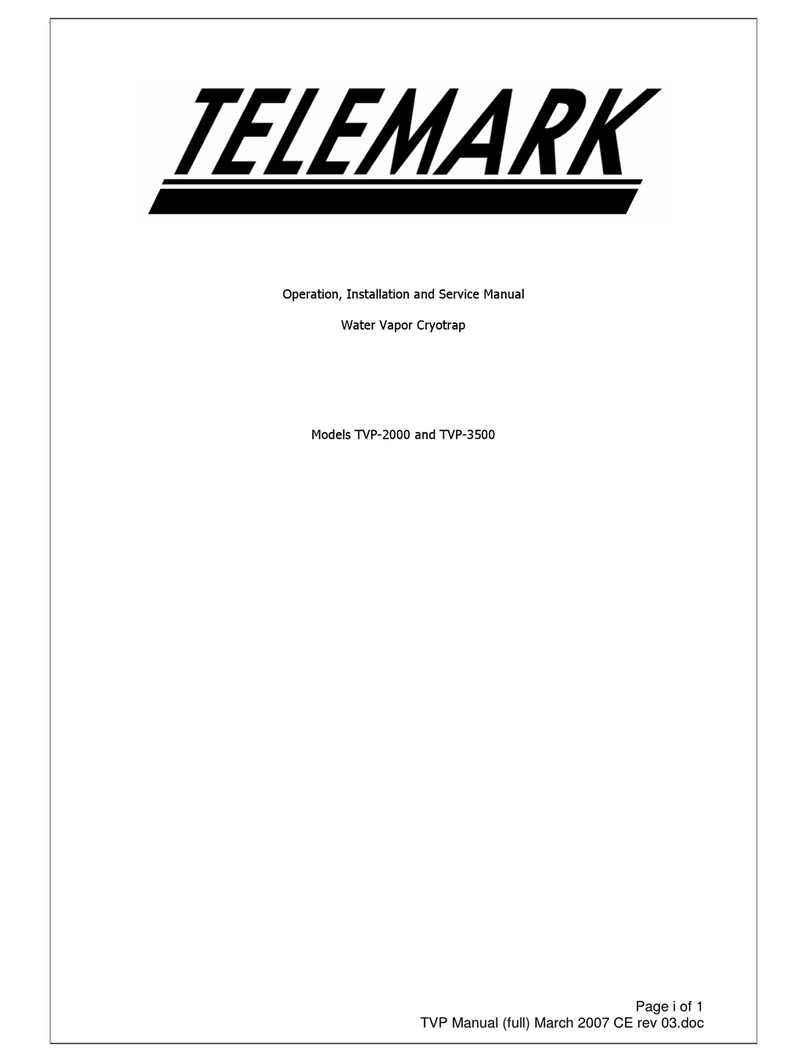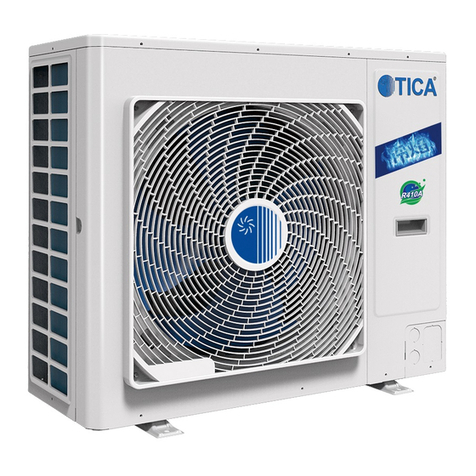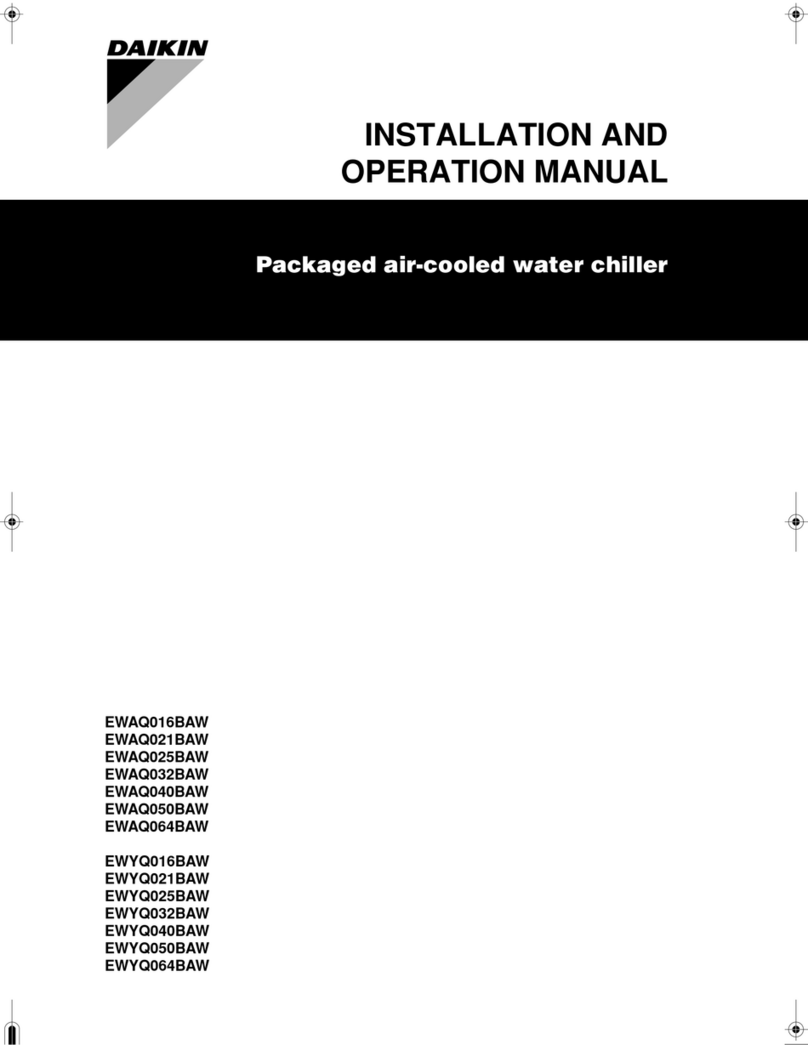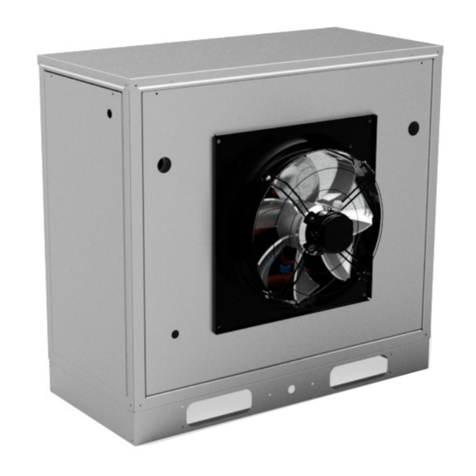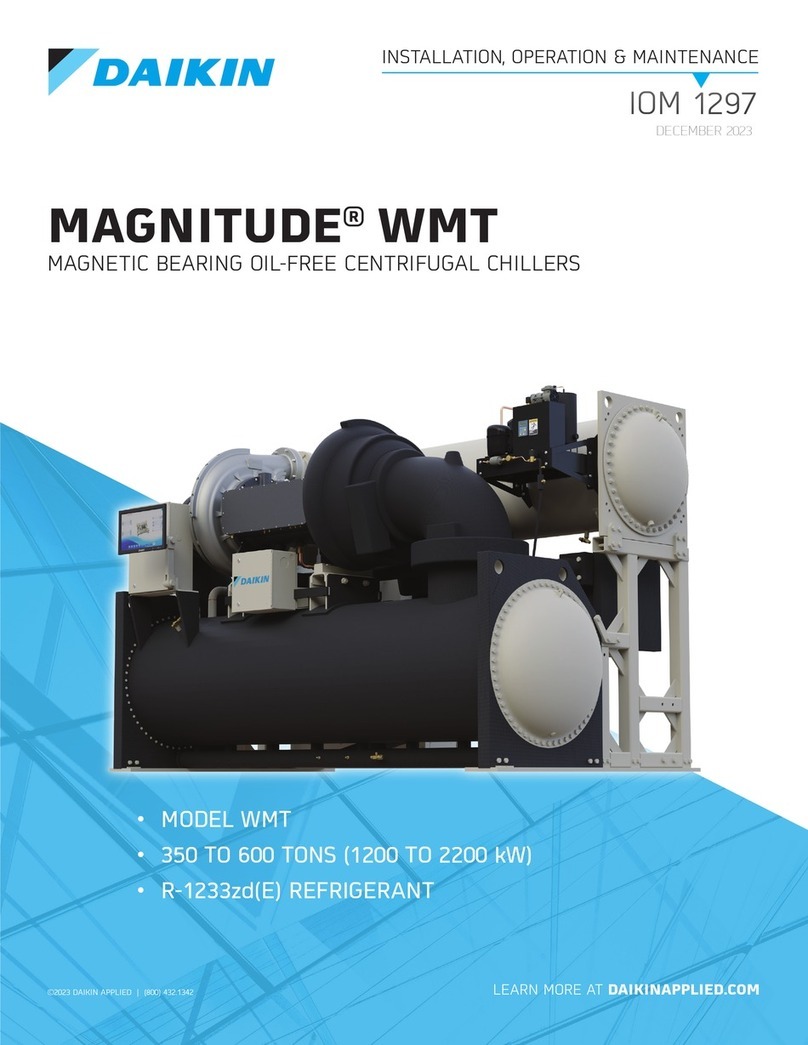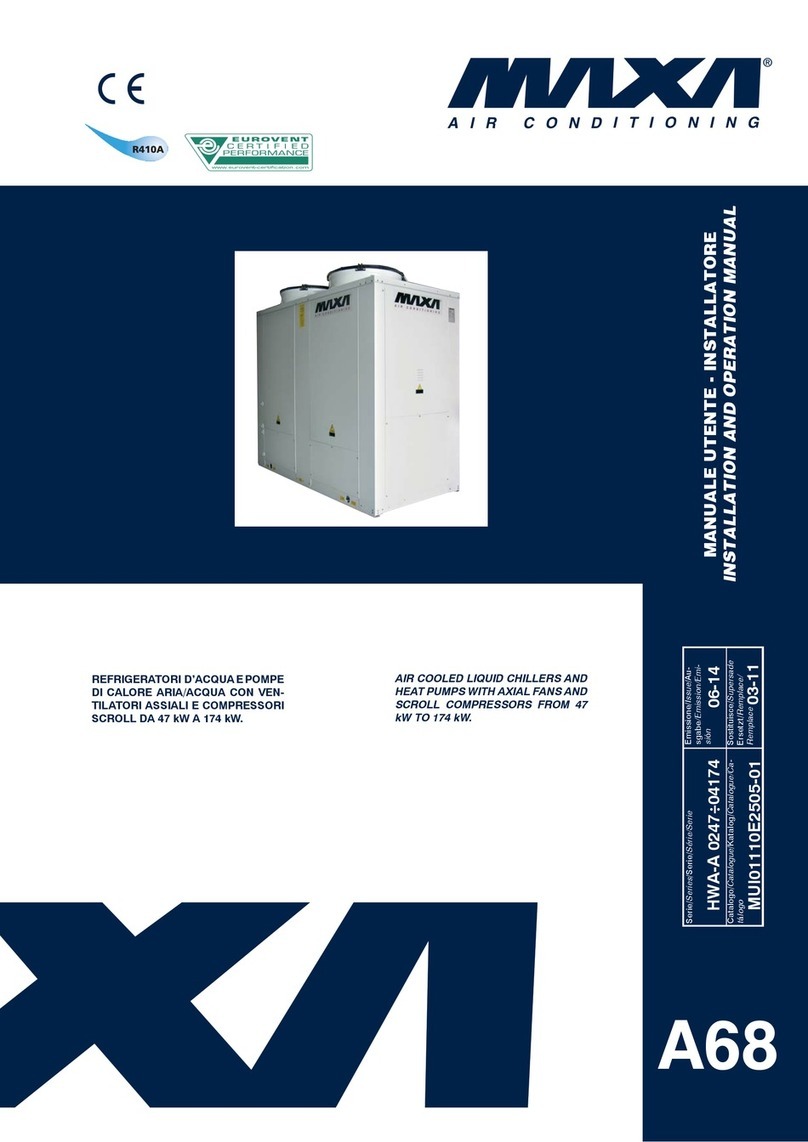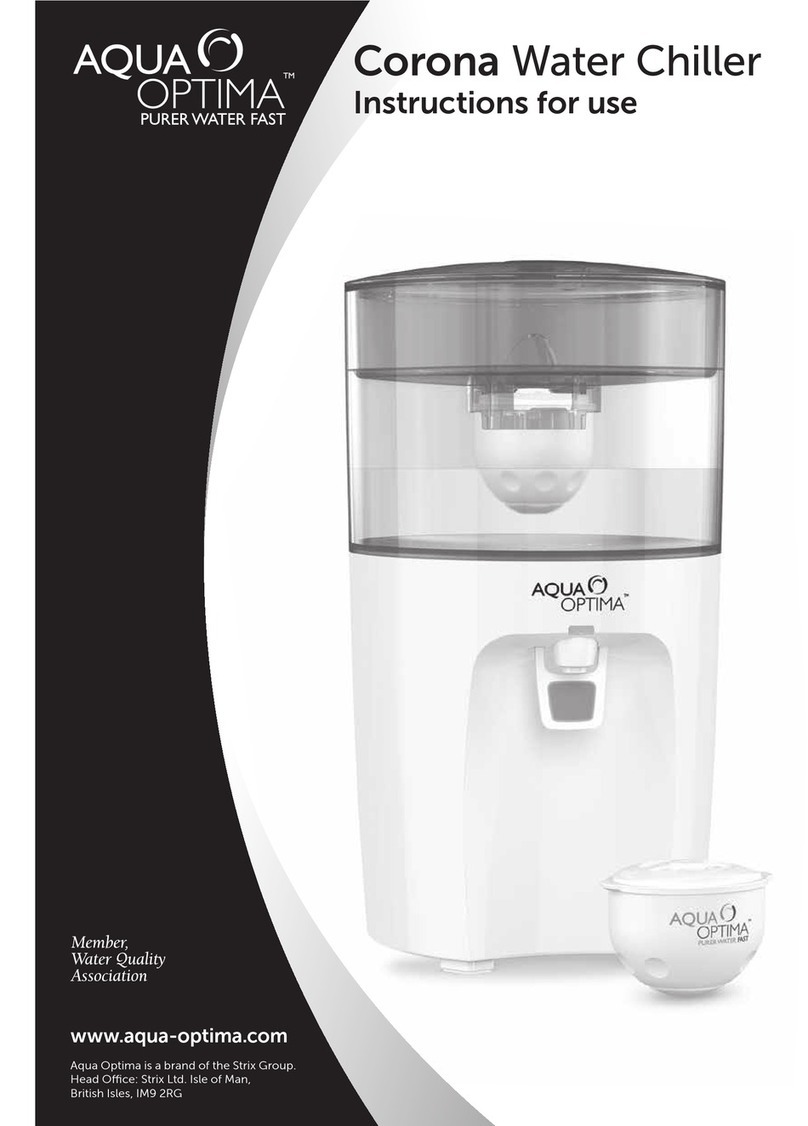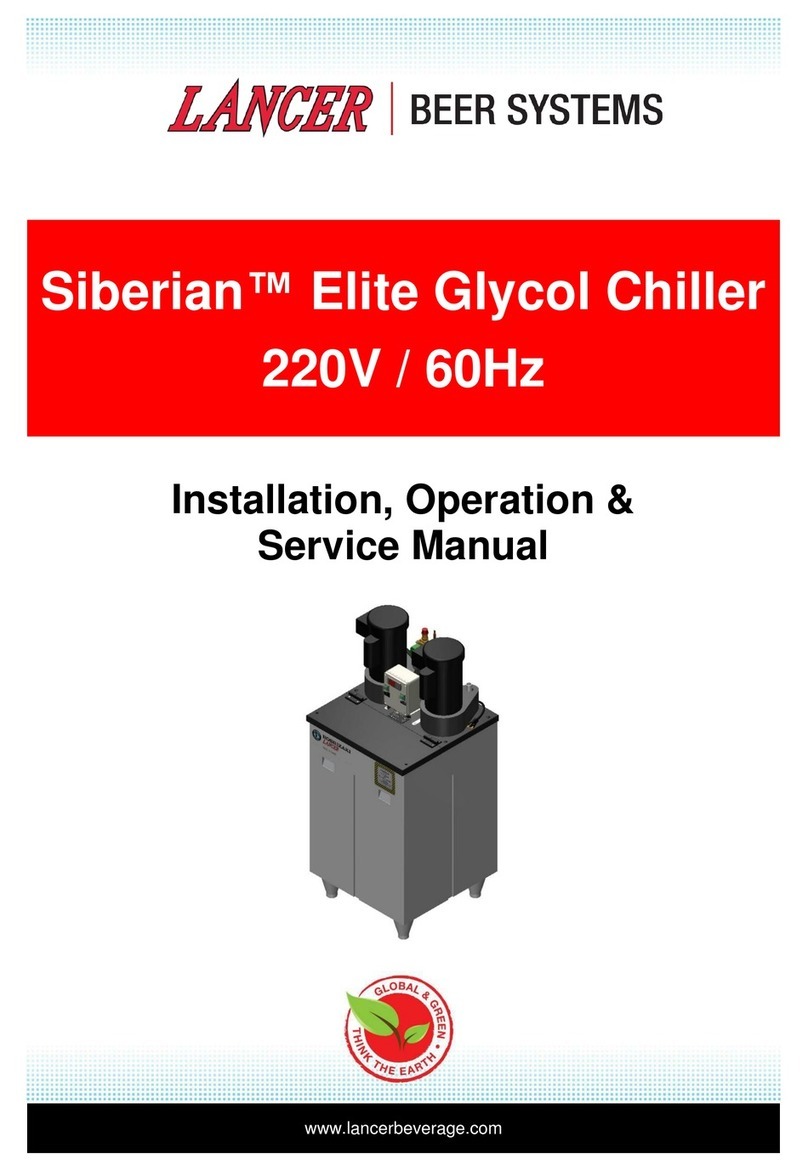
IOM 1274-3 • CENTRIFUGAL WATER CHILLERS 10 www.DaikinApplied.com
WARNING
Polyolester Oil, commonly known as POE oil is a synthetic
oil used in many refrigeration systems, and is present in this
Daikin Applied product. POE oil, if ever in contact with PVC/
CPVC, will coat the inside wall of PVC/CPVC pipe causing
environmental stress fractures. Although there is no PVC/
CPVC piping in this product, please keep this in mind when
selecting piping materials for your application, as system
failure and property damage could result. Refer to the pipe
manufacturer’s recommendations to determine suitable
applications of the pipe.
CAUTION
connections:
1. Remove the solid-state temperature sensor,
switches from the wells to prevent damage to those
components.
2. Properly ground the unit or severe damage to the
MicroTech®unit controller can occur.
NOTE:
performed on a vessel shell or tube sheet.
The water heads can be interchanged (end for end) so that
the water connections can be made at either end of the unit.
If this is done, use new head gaskets and relocate the control
sensors.
Field installed water piping to the chiller must include:
• air vents at the high points.
• a cleanable water strainer upstream of the evaporator
and condenser inlet connections.
•
condenser. Flow switches, thermal dispersion switches,
or Delta-P switches can be used. Note that thermal
series with the ones already provided. Connect additional
discussed on page 69.
• water pressure gauge connection taps and gauges at the
inlet and outlet connections of both vessels for measuring
water pressure drop.
•
chiller must be capable of draining the water from the
evaporator or condenser without draining the complete
system.
• Piping must be supported to eliminate weight and strain
• Chilled water piping must be adequately insulated.
• thermometers at the inlet and outlet connections of both
vessels.
CAUTION
When common piping is used for both building heating and
cooling modes, care must be taken to provide that water
this hot can damage controls or cause the relief valve to
discharge refrigerant.
NOTE:
equipped with a shell and tube evaporator with
carbon steel shell and copper tubes. The water or
the heat exchangers must be clean and non-corrosive
to the standard materials of construction. Daikin
Applied makes no warranty as to the compatibility
void the equipment warranty. If the compatibility of
is in question, a professional corrosion consultant
should administer the proper testing and evaluate
compatibility.
Heat Recovery Condenser
Connections
The tower connections on heat
recovery units are always the
inboard pair of connections.
In the image to the left, the
condenser connections are
the front of the unit (Unit Control
Panel and Interface Panel side),
so in this case, the right-hand
condenser connections would be
for the tower. If the condenser
connections were on the other
connections would be the left-
hand pair of connections.
and care must be used to avoid sources that can cause
corrosion, fouling, or accumulation of debris in the heat
exchanger. For open water loop applications, an intermediate
heat exchanger between the source water and unit evaporator
may be desirable.
Water Quality Guidelines
The water quality provided by the owner/occupant/operator/
user to a chiller system should minimize corrosion, scale
of HVAC equipment without creating a hazard to operating
personnel or the environment. Strainers must be used to
protect the chiller systems from water-borne debris. Daikin
Applied will not be responsible for any water-borne debris

